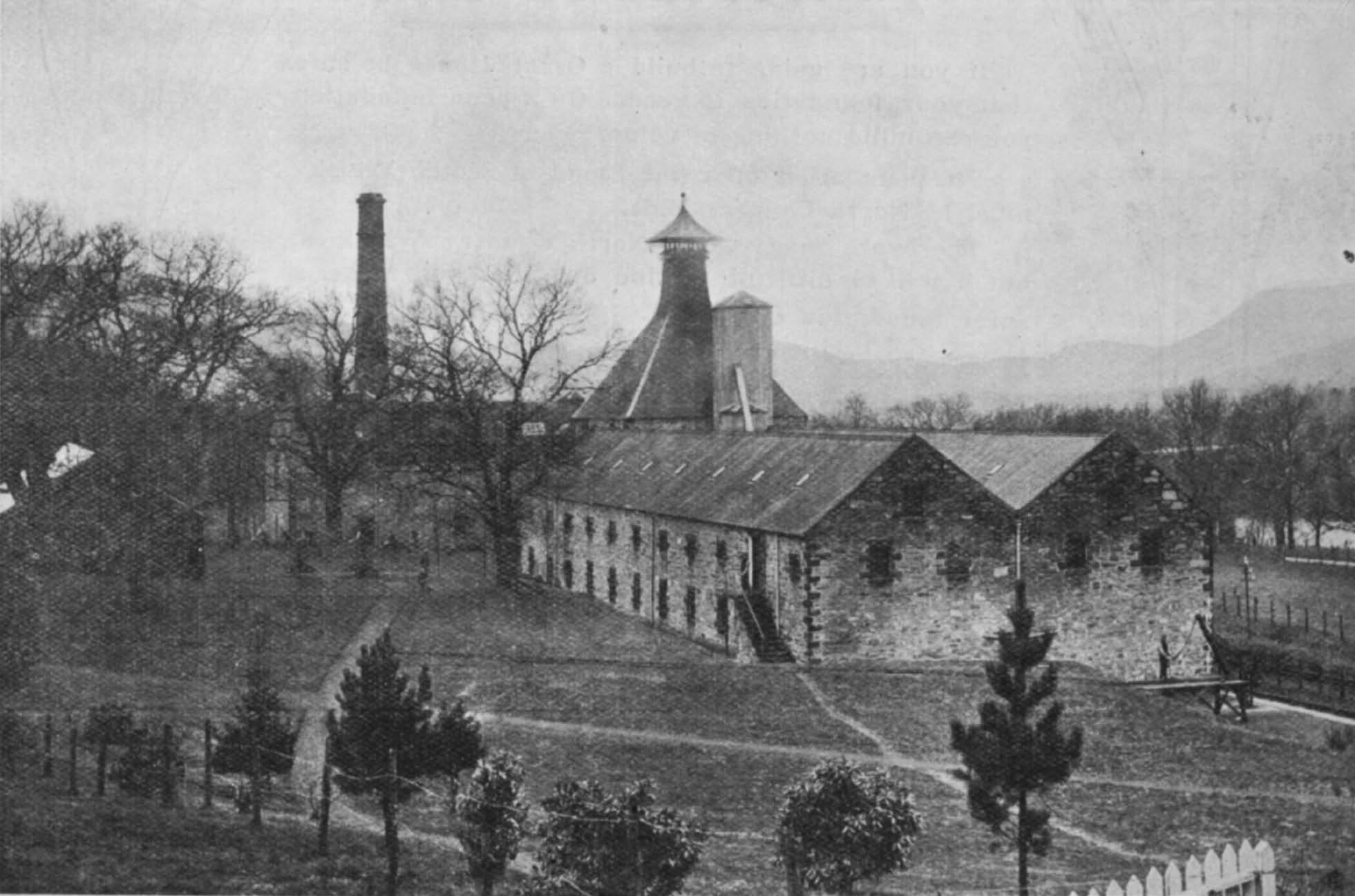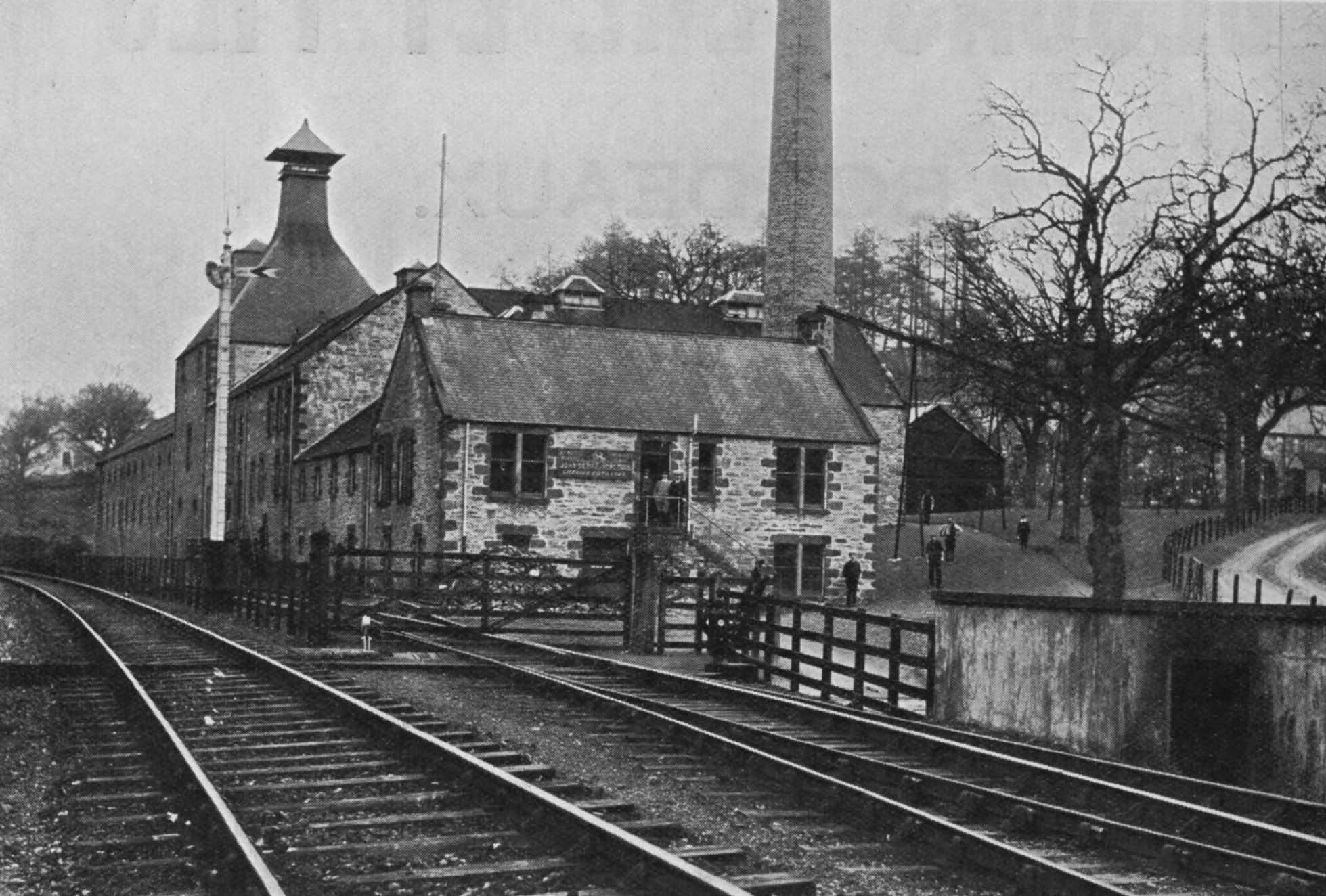XCV
Aberfeldy Distillery, Perthshire
December 14th, 1925
Reminisces of the smuggling days of old are conjured up by a visit to Aberfeldy Distillery, romantically situated on the slopes of the Grampians. Many years ago this district abounded with smugglers’ “bothies,” but under the vigilant eye of the Excise officers these were gradually run to earth, and to-day these things are but an historic memory to most of the residents. According to the local stories, the smugglers hereabouts were no wit less audacious than their contemporaries in the remoter parts of the Highlands, but more often than not the discovery of these illicit stills was directly attributable to “peaching” on the part of a disgruntled member of the band. The Aberfeldy Distillery, of Messrs. John Dewar and Sons, Ltd., of Perth and London, is only about thirty years old, but in the same neighbourhood was once one of the old original Scottish Distilleries known as Pitilie, but this was long ago dismantled.
From the distillery is a fine commanding view of the river Tay, famed as a Scottish salmon water, and of the majestic towering peaks of the Grampians, among which may be discerned Ben Lawers and Schiehallion, the favourite haunts of mountaineers who visit Scotland. Less than half a mile away is the picturesque village of Aberfeldy. The district around has a further claim to notoriety, for it was at one time within the demesne of the famous Clan Campbell, whose overlords held court at Taymouth Castle, to-day a modern hydropathic and hotel.
Aberfeldy and district is redolent with intriguing history, but it is to the distillery in particular that we must direct our attention. As already indicated, it is situated in the valley of the Tay, about thirty miles north of Perth, and is renowned for its product of a fine Highland Malt Whisky. The distillery is connected with the London, Midland and Scottish Railway main line by a special siding, enabling expeditious transport to and from the premises.
Nothing but the finest barley, principally Scottish, is used in the manufacturing process. An excellent supply of burn water is available. The latest and most up-to-date plant and machinery have been installed, and the premises are illuminated throughout by electric light.
The distillery premises, which cover about four acres, are built on land which formerly belonged to the late Marquis of Breadalbane, but the freehold has been recently acquired by Messrs. John Dewar and Sons, Ltd. The company have also installed an efficient system of filtration tanks, so that all the effluents are properly filtered before being drained away. The distillery produces about 120,000 proof gallons in the course of a distilling season from September to June. The bonded warehouses can store about half-a-million gallons. Most of the Whisky is filled in Sherry wood casks for maturing before being taken to the big blending centres at Glasgow, Leith, Perth etc.
A considerable quantity of the by-products such as draff and culms are disposed of locally, and are in special demand by the dairy farmers before the new grass is available for pasturage. Ample housing accommodation is provided for the manager of the distillery, the Excise officer, and workmen. Quite recently the company erected in addition four artistic cottages for the occupation of employees. During the “silent” months full advantage is taken of the off season to overhaul completely all the plant and machinery, and the whole of the interior of the buildings are thoroughly cleaned and painted.
Images © The British Library Board



